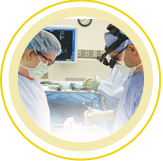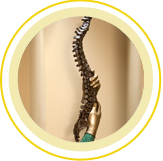Sciatica is a term that explains pain that radiates along the sciatic nerve. The sciatic nerve runs from the lower back, through the buttock and down the back of each leg. It typically affects people 30 to 50 years of age, but can affect people of all ages.
What are the Symptoms of Sciatica?
Symptoms of sciatica vary depending on the severity of the compressed nerve. The most common symptoms include:
- Pain that radiates along the sciatic nerve
- A tingling sensation in the toes or feet
- Numbness in the leg or foot that’s affected
- Muscle weakness in the leg or foot that’s affected
- A feeling of an electric shock when coughing or sneezing
The symptoms of sciatica gradually worsen over time. If you experience pain from sciatica, avoid sitting for extended periods of time as it may intensify the pain.
Diagnosing Sciatica
It’s important to seek care from a physician if symptoms from sciatica are interfering with your life. At your appointment, a physician will do a physical exam and ask for a complete medical history. This will help the physician determine the location of the irritated nerve. Diagnostic tests such as X-rays, MRI scans and CT scans are rarely necessary, unless a physician is attempting to diagnose a bigger issue.
Can I Treat Sciatica?
Eighty to 90 percent of people with sciatica recover without surgery. The most common treatments for sciatica include:
- Analgesics for pain, such as over-the-counter anti-inflammatory drugs.
- Steroid medications might be prescribed if pain is severe
- Physical therapy might be suggested to relieve the pain
- Surgery is requested when the compressed nerve causes substantial weakness, bowel inconsistency and bladder inconsistency.
Contact our office for information on diagnosing and treating sciatica




